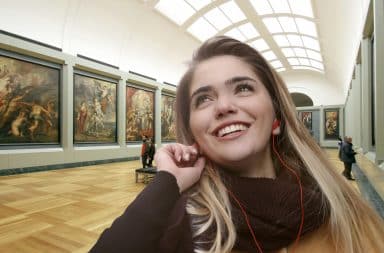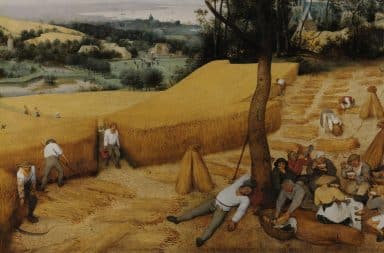The works of art in this installation feature mistakes in all their variety, showcasing the artist's challenges to current social, political, and economic burden of modernity. In a society of success, the artist probes failure.
As a whole, the works question us: What's acceptable? And, in the sad life of the artist during the performance, answer: not this person. Of the exhibit, the artist said: “I want to make clear that, for years, I’ve been making mistakes as part of this exhibit and they should all be viewed in that light now. Furthermore, I am an artist. Look, I have an exhibit.”
N.O. Deodorant, 2015, pungent scent, temporary exhibit on display depending on time getting ready in morning, on displaying lunch run to Walgreens to buy Old Spice
A controversial work, this performance asks a fundamental question: Is “the natural” made repulsive under capitalism? The answer, from Megan in Human Resources: Yes, “please come in a way that respects the workplace.” There was a long discussion with HR after multiple incidents.
P90X, 2015, DVD, bought with need to boost self-esteem after playing with belly fat at 1:32 a.m.
This DVD—when coupled with eating pizza and thinking how flexible Alex (on the back right mat) is—deals with the theories of change over time. Here, we see how a hope to alter rigid stasis requires not just intent but genuine effort. By minimizing the Wikipedia page on the Chinese Cultural Revolution to watch the video, it further engages with what “revolutionary” change means: in either cut abs or political systems. Based on Alex’s kicks, perhaps even by violent means.
still fat! (or P90X II), 2016, photo of artist taken on iPhone held up to photo of Google Images of “fit man” on computer, courtesy of self-doubt
“What if revolution does not come?” is what the artist said when holding up the photo to the computer. The work is part of an ongoing series.
untitled TYE-PO, 2016, black text on white paper, 8.5 in x 11 in., Gift of not proofreading before printing out
In this, the fourth draft of an email, the bold and theatrical misspellings symbolize the ability of authority in hierarchical systems to dictate what is “standard.” Typos are associated with laziness and poor quality in American myth, a theme with which the work engages. The email’s misspelled words combine with misguided ideas, merging form and content. Some scholars have also noted that the email was meant for Cindy, sent to Sandy, adding another layer to the work. The artist had another meeting with HR.
The Lonely Hand’s Solo; In Motion, 2017, for Ryan, whom I thought was waving but was not waving and actually does not even recognize me and now I’ve made eye contact and my hand is in the air and Ryan is just going to not even acknowledge it
Americans have become habituated to extreme loneliness and social isolation. Previously, more community-based societies were common. This work shows an attempt to return to close-knit community—especially pre-civilization hunter-gatherers most associated with the social act of waving—by acknowledging even the slimmest amount of humanity in another person. The total rejection of that hope devastates the watcher of this performance piece.
Another element is added with knowledge of the context. We know from records that Ryan worked with the artist—before he was fired over what documents unearthed by a scholar says was “horrific incompetence” plus “that deodorant thing.” The artist has been performing the piece since 1999.
But in adult life, it becomes more gripping after unemployment. It is a metaphor for business rejecting the artist. Without work, what is life? the artist asks with the flick of his hand. The work was followed by another piece: a series of texts to a few friends going, “lol so awkward, I gotta tell you something.” All texts went unanswered.
Spit 4, 2017, saliva on wool sweater and taxi seat, 10 in. x 17 in. (estimated), courtesy of speaking quickly while nervous
This piece advances a series of experiments with how the body responds to stress. The artist, trying to say the word “pejorative,” launched phlegm at Caitlin Smith. Many cultures associate spitting on others as a sign of disrespect. Beginning with the “BARF” series, in which the artist as a child famously puked in front of his 2nd grade class, the work questions the body as an object both in and mostly out of one’s control. Historical records show this was the only date the artist went on in 2017. It also ended his “solo phase,” wherein he tried to create art about living alone. He relocated home in early 2018 to further test his art in relation to family.
GeanS, 2018, denim pants, 40 inches long, found in Dad’s closet
Though he was only 29 at the time, the artist already found he fit into his father’s jeans. Relentlessly appropriative, the artist began wearing the pants around his hometown. In a Godless world, horoscopes and other traditional methods of deciding the future have become common. The artist’s work addresses how this collides with the biological. What does it mean to be our parents? The artist began working as an assistant at his father’s insurance office.
you-can-be-anything, 2018, Facebook event created for an art gallery showing, found online by three attendees
This piece describes an art gallery event in which a series of works will be hung up in the artist's mom's garage. The artist's search history indicates he created it after looking up “can anyone get new life from witness protection?” And then “Kanye new album,” where he stayed on a webpage about how Kanye West’s recent actions are actually part of a long-term art project.
The Facebook event challenges assumptions of who decides a narrative and whether being an artist, while not resulting in income, can be considered “work.” Emails show the link was sent to multiple high school classmates and people the artist had written down in a notebook under the title “judging me.” The message included the sentence: “It was a long, important project, but now I am ready to re-emerge into my old, very cool self, who doesn't have to make mistakes on purpose for my (very important) art.”


